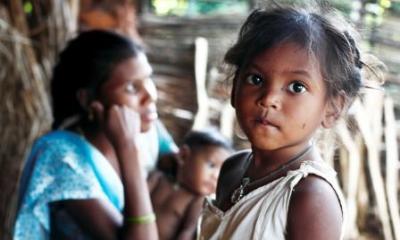
The Young Lives school surveys were piloted in Ethiopia in 2009-10, before being further developed in the other study countries.
In 2012-13 a school survey was conducted in two waves with a sub-sample of the Young Lives Younger Cohort children studying in Grades 4 and 5, together with a sample of their peers. The survey aims to offer information about the relationship between children's backgrounds and their learning progress over a single academic year in both Maths and literacy. This is made possible by the 'test and retest' structure of the design, which allows for the measurement of progress in relation to curricular expectations. Data collection was extended from the 20 Young Lives sample sites to include the addition of two emerging regions - Somali and Afar - where educational deprivation is high and existing data are sparse, as well as a focus on rising enrolment in low-fee private schools in urban areas.
The initial sample of Young Lives children comprised all Younger Cohort children expected to be studying in Grade 4 and 5, in schools which fell within the geographic boundaries of the Young Lives sentinel site. These children were tracked to their schools, where all Grade 4 and 5 classes containing a Younger Cohort child or children, were sampled. In each class, a random selection of peers were added to the sample of Young Lives children, so that 20 children per class were included in the survey. The final sample comprises approximately 11,800 children across 29 sentinel sites and 8 languages of instruction. Wave 2 of the survey involved the same Young Lives children and their peers as were included in Wave 1. If children who had been surveyed at Wave 1 were not present at Wave 2, they were simply not included, and no substitute children were added.
A third round of the Ethiopia school survey took place in 2016-17, conducted in two waves at the beginning and end of the school year. Findings are published in this report.
Survey Documentation and Questionnaires:
The survey instruments include data collection at the school, class and pupil level, and involved the head teacher, class teacher, and pupil.
The Young Lives school surveys were piloted in Ethiopia in 2009-10, before being further developed in the other study countries.
In 2012-13 a school survey was conducted in two waves with a sub-sample of the Young Lives Younger Cohort children studying in Grades 4 and 5, together with a sample of their peers. The survey aims to offer information about the relationship between children's backgrounds and their learning progress over a single academic year in both Maths and literacy. This is made possible by the 'test and retest' structure of the design, which allows for the measurement of progress in relation to curricular expectations. Data collection was extended from the 20 Young Lives sample sites to include the addition of two emerging regions - Somali and Afar - where educational deprivation is high and existing data are sparse, as well as a focus on rising enrolment in low-fee private schools in urban areas.
The initial sample of Young Lives children comprised all Younger Cohort children expected to be studying in Grade 4 and 5, in schools which fell within the geographic boundaries of the Young Lives sentinel site. These children were tracked to their schools, where all Grade 4 and 5 classes containing a Younger Cohort child or children, were sampled. In each class, a random selection of peers were added to the sample of Young Lives children, so that 20 children per class were included in the survey. The final sample comprises approximately 11,800 children across 29 sentinel sites and 8 languages of instruction. Wave 2 of the survey involved the same Young Lives children and their peers as were included in Wave 1. If children who had been surveyed at Wave 1 were not present at Wave 2, they were simply not included, and no substitute children were added.
A third round of the Ethiopia school survey took place in 2016-17, conducted in two waves at the beginning and end of the school year. Findings are published in this report.
Survey Documentation and Questionnaires:
The survey instruments include data collection at the school, class and pupil level, and involved the head teacher, class teacher, and pupil.






